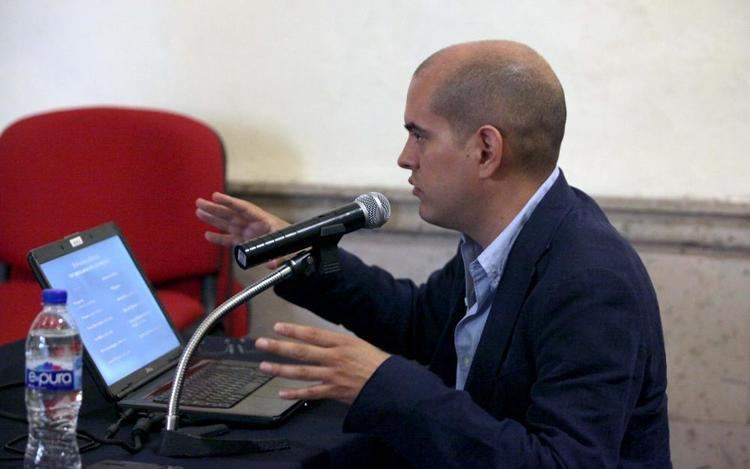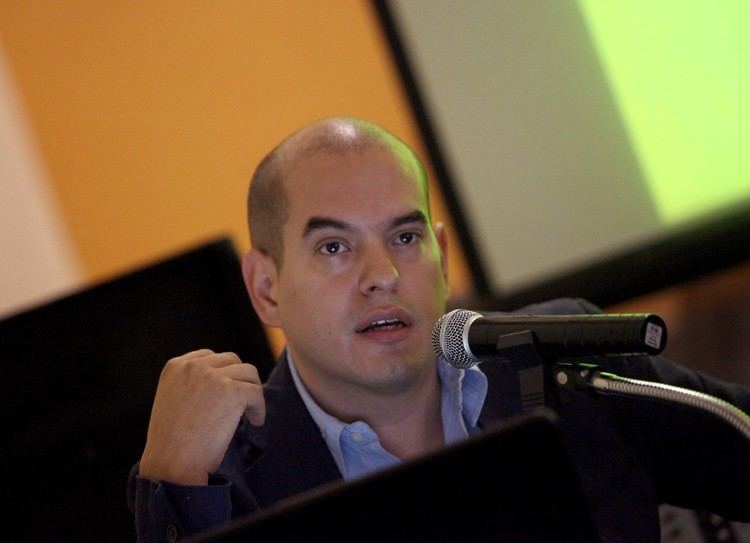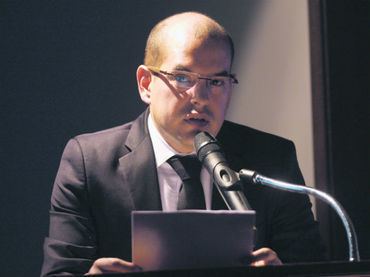Years active 1995 – present | Name Gabriel Pareyon Role Composer | |
 | ||
Genres Contemporary Music, Mexican composers, 21st century music Occupation(s) Composer & musicologist Books On Musical Self-similarity: Intersemiosis as Synecdoche and Analogy Albums Getho Xa'nekua Ra Getho (Cantares de Autorreferencia / Self-Referential Chants) Similar People Julian Carrillo, Carlos Chavez, Mario Lavista, Miguel Bernal Jimenez, Jose Angel Espinoza | ||
Gabriel Pareyón-Xanpöhti tsutsideni (2005) for accordion
Gabriel Pareyon (born October 23, 1974, Zapopan, Jalisco) is a polymathic Mexican composer and musicologist, who has published literature on topics of philosophy and linguistics.
Contents
- Gabriel Pareyn Xanphti tsutsideni 2005 for accordion
- Gabriel Pareyn Nangu na ngoni xt xi thutsi m tuhu
- Composer
- Musicologist
- Writings
- References

He has a Ph.D. in musicology from the University of Helsinki, where he studied with Eero Tarasti (2006–2011). He received bachelor's and master's degrees in composition at the Royal Conservatoire, The Hague (2000–2004), where he studied with Clarence Barlow. He also studied at the Composers’ Workshop of the National Conservatoire of Music, Mexico City (1995–1998), with Mario Lavista.

Gabriel Pareyón: ʼNangu ʼna ngoni xtä xi thutsi mä tuhu
Composer

Pareyon's output is specially known by Xochicuicatl cuecuechtli (2011), the first modern opera in the Americas that exclusively uses a Native American language (Nahuatl in this case) as well as music instruments native to Mexico.
As young composer (from 2006 and earlier), several works written by Pareyon were selected for the Thailand International Saxophone Competition for Composers (Bangkok, 2006, I Prize), the 2nd International Jurgenson Competition for young composers (Moscow, 2003, II Prize) and the 3rd Andrzej Panufnik International Composition Competition (Kraków, 2001, III Prize). His earlier production includes works for common objects (such as bottles, stones, etc.) as well as for classical (European) instruments and ensembles. He also experimented with Mexican traditional instruments (such as huehuetl, teponaztli and a wide variety of woodwinds), and metre and phonetics from Nahuatl and Hñähñu.
His music also combines wider aspects of linguistics and human speech, mathematical models (series, patterns, algorithms, etc.), and models coming from bird vocalization and nonverbal communication.
Musicologist
As musicologist, publications of Pareyon contributed to recognize aspects of the new music from Mexico in his own country and abroad, e.g. in the explanation and extension of Julio Estrada's work (see McHard 2006, 2008:264). Accordingly, his work is quoted, as early as from 2000, by international compilations about the music of Mexico (see e.g. Olsen & Sheehy 2000:108; Nattiez et al. 2006:125, 137, 1235) and specialised literature (see e.g. Brenner 2000:177; Madrid & Moore 2013:94, 126).
In the field of systematic musicology, Pareyon's book On Musical Self-Similarity (2011) predicts the role of analogy as one of the capital issues for future musicology and cognitive science, foreseeing conclusions of Hofstadter & Sander's Surfaces and Essences (2013). According to Curtis Roads (2015:316), On Musical Self-Similarity "is an intriguing treatise in which repetition is generalized to several modes of self-similarity that are ubiquitous in musical discourse.".
